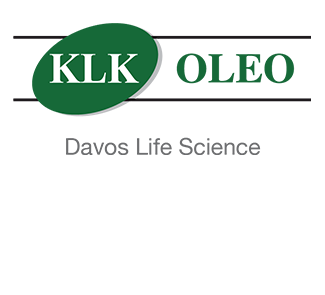We have all had a gut feeling—an intuition considered more valid than thought that can guide us to make a good decision. We can hate someone’s guts, or admire them because they are brave—they have guts. Integrative practitioners claim that all health begins in the gut. The gut is involved in immune system function, mood, weight maintenance and so much more. However, the best-known activity of the gut is the assimilation of the nutrients needed for energy and life itself from the food we eat. This is called digestion. And as with many processes, the efficiency of our digestive system is diminished with age. That is why a 20 year old can eat a chili cheese dog with onions and pickle relish with a side order of deep fried onion rings and suffer no serious consequences, while a person twice or thrice that age may be miserable (or even ill) after such a challenging meal.
The gastrointestinal system begins with the mouth and ends with the anus. Between these two endpoints is a continuous closed system of tubing of various structures. In fact, when you think of it, we have a hole that runs through the entire middle of our body! The only way that anything in our guts gets inside the rest of our body is if it is broken down into tiny particles that can be absorbed. This is a vast and complex system, and there are lots of places where this process can break down.
Digestion starts with chewing in the mouth, where certain enzymes start to break down starches into simple sugars. Swallowing the chewed food takes it down the esophagus and into the stomach, where mild churning and acid liquefy the food further. After a period of time, the food moves into the small intestine, where the pancreas releases pancreatin. Pancreatin is a collection of enzymes that includes protease for digesting protein, amylase for digesting carbohydrates and lipase for digesting fats. These enzymes break up the food into their smallest molecules for absorption in the intestines. At this point, the food (now called chyme) is liquid. As chyme reaches the large intestine (also called the colon) water is removed and the chyme starts to solidify into feces and prepared for elimination.
Living in the intestinal tract are bacteria that interact intimately with our health. They help to process waste, create vitamins and even detoxify carcinogens. The list of all they can do goes on and gets longer every day as researchers learn more about this colony of microscopic inhabitants called the microbiome.
Therefore, two of the most visible points at which you can improve digestion and ameliorate digestive issues are boosting our own body’s reserves of digestive enzymes and probiotic bacteria.
Enzymes
Not all enzymes are created equal. For example, even though protease digests protein, it can come from various sources. The most popular in the supplement market are plant-based enzymes, derived from a fungal process, and animal-based enzymes, derived from the pancreas of animals harvested for food, generally pigs. Each has their pros and cons.
Enzyme activity varies according to the level of acidity in the environment. The same enzyme that is slow and inactive in an acid environment may become fast and highly active when it is in an alkaline (much less acid) environment. One advantage of plant/fungal enzymes is that they are active over a wider range of the acidity to alkalinity spectrum. They are also vegetarian.
Enzymes in pancreatin from animals are more like what is already in the human body. Enzymes are used for more than digestion. They have systemic activity in the immune system and have anti-inflammatory properties, and the majority of these studies are animal-based pancreatic enzymes. Enzymes are also available as prescription medications for diseases like cystic fibrosis and malabsorption syndrome, and enzymes derived from pork products are used to better replicate the body’s own enzyme system.
Taking enzymes with each meal will better assure proper breakdown of food and better nutrient assimilation. They may also improve gut transit time, which can alleviate bloating, indigestion, and heartburn.
Probiotics
Probiotics have grown astronomically in significance, as scientists continue to find new ways in which the microbiome influences, and in some cases, even controls our health.
I like to think of the microbiome as cities. Los Angeles and New York share many characteristics, but are also quite different, too. Each of us carries within us a unique city populated with unique individuals (flora). Researchers have not yet identified and named all the flora that colonize our gut, and we are just scratching the surface of the microbiome/brain connection. It is very exciting to think of all the health breakthroughs yet to come as we learn more about this crucial system. Doctors are already having great success with fecal transplants to ameliorate serious problems like chronic clostridium difficile, a gut infection with potentially life threatening characteristics.
Our microbiome population is decimated with the use of antibiotics, so while these drugs can be life-saving, they should be used sparingly. Even a short course can change the gut flora for up to a year or even more.
Supplementing with probiotics can greatly improve digestive issues. They can reduce cramping, gas and both diarrhea and constipation, quiet inflammatory bowel syndrome and prevent cancer.
Bifidobacterium bifidum, Lactobacillus rhamnosus and Lactobacillus plantarum are three probiotic bacteria that are especially useful with ongoing digestive issues associated with intestinal inflammation. Some diseases in this category include colitis, collagenous colitis, mucous colitis, inflammatory bowel disease (IBD), irritable bowel syndrome (IBS) and Crohn’s disease.
In a four-week clinical study on people with IBS, the use of L. plantarum reduced symptoms significantly in 95 percent of the participants. In the placebo group, only 15 percent improved. In another four-week clinical trial, L. plantarum reduced both the frequency and severity of abdominal pain and bloating in 78 percent of the participants, compared to only 8 percent in the placebo group.
L. rhamnosus has been shown to reduce inflammation and to also strengthen the barrier within the intestines to prevent leaky gut, also known as altered intestinal impermeability. This is especially important for individuals with autoimmune diseases.
B. bifidum also has published human studies showing that it can significantly reduce IBS symptoms such as pain, bloating, bowel frequency, bowel urgency and overall quality of life. Combining strains of probiotics can have synergistic benefits. In a a double-blind, placebo-controlled study, scientists found that a mixture of probiotics (B. bifidum and L. rhamnosus) reduced symptoms of IBS in only four weeks, including a significant reduction in episodes of diarrhea.
There is no question that probiotic bacteria have incredible health benefits for digestion and more. The question becomes what form and at what dose.
Probiotic bacteria are sometimes measured in CFU, meaning colony forming units. They are also sometimes reported as live bacteria counts, or live active cultures. Dose can be misleading, because one billion alive and thriving bacteria are better than 50 billion weak, dying, or dead bacteria. Also, the quality of the bacteria is also important. Horses are all called horses, but if you want to win a race, you’d be more likely to prefer thoroughbred racehorses to plow horses. The same is true of probiotic bacteria. For example, a strain may indeed be Lactobacillus acidophilus, but some are racehorses, and some plow horses. Researchers who work with these cultures spend time and effort (and money) to encourage the racehorses to reproduce and to weed out the draft horses. That is why an inexpensive product may in fact contain exactly what it says on the label and still not work. And that is why another company with the same name of probiotic bacteria on the label may work beautifully.
One thing to look for is a guarantee that the probiotic will be alive and active at the time of use, not the time of manufacture. Another is to look at clinical studies and see which bacteria have demonstrated effectiveness.
Some bacteria are enteric coated and not released until the capsule enters the intestine, because stomach acid kills a certain number of bacteria. However, there are strains that are relatively acid resistant, and if taken with meals, have an excellent survival rate.
Likewise, some probiotics require refrigeration to remain alive and active. I prefer shelf-stable probiotics, meaning no refrigeration needed. My reasoning is that if the bacteria must be refrigerated at all times, they won’t travel well. The bacteria could have been left unrefrigerated for a period of time of which the consumer is unaware. There are probiotic researchers who have developed shelf-stable strains, so much easier to travel with the product and not much concern regarding the refrigeration chain prior to purchase.
There are many powerful natural medicines that can improve issues with digestion. But as with all dietary supplements, it pays to do your homework and ask questions. VR
References:
Pancreatic Enzyme Replacement Therapy Fact Sheet. Available at: www.netpatientfoundation.org/wp-content/uploads/004-NPF-PANCREATIC-ENZYME-REPLACEMENT-THERAPY-v7.pdf. Accessed February 6, 2018.
Nakamura T, et al. Pancreatic dysfunction and treatment options. Pancreas. 1998;16(3):329-336.
Miller PC, et al. The effects of protease supplementation on skeletal muscle function and DOMS following downhill running. J Sports Sci. 2004 Apr;22(4):365-72.
Roberts I. Enzyme therapy for malabsorption in exocrine pancreatic insufficiency. Pancreas. 1989;4(4):496-503.
Chintalacharuvu SR, et al. Treatment of collagen induced arthritis by proteolytic enzymes: immunomodulatory and disease modifying effects. J Rheumatol. 2001 Sep;28(9);2049-59.
“Supplemental Enzymes” PDRhealth web site. Available at: www.pdrhealth.com/drug_info/nmdrugprofiles/nutsupdrugs/sup_0328.shtml.
Heyman M, Desjeux JF. Cytokine-induced alteration of the epithelial barrier to food antigens in disease. Ann N Y Acad Sci. 2000;915:304-11.
Mazurov VI, et al. Beneficial effects of concomitant oral enzymes in the treatment of rheumatoid arthritis. Int J Tiss React. 1997;19:91.
Ransberger K: Enzyme treatment of immune complex diseases. Arthritis Rheuma. 1986;8:16-9.
Ransberger K, van Schaik W: Enzyme therapy in multiple sclerosis. Der Kassenarzt. 1986;41:42-5.
Steffen C, et al.: Enzyme therapy in comparison with immune complex determinations in chronic polyarteritis. Rheumatologie. 1985;44:51-6.
Popiela T, et al. Influence of a complementary treatment with oral enzymes on patients with colorectal cancers – an epidemiological retrospective cohort study. Cancer Chemother Pharmacol. 2001 Jul;47 Suppl:S55-63. Leipner J, Saller R: Systemic enzyme therapy in oncology: effect and mode of action. Drugs. 2000;59:769-80.
Wasilewski A, Zielińska M, Storr M, Fichna J. Beneficial Effects of Probiotics, Prebiotics, Synbiotics, and Psychobiotics in Inflammatory Bowel Disease. Inflamm Bowel Dis. 2015 Jul;21(7):1674-82.
Niedzielin K, Kordecki H, Birkenfeld B. A controlled, double-blind, randomized study on the efficacy of Lactobacillus plantarum 299V in patients with irritable bowel syndrome. Eur J Gastroenterol Hepatol. 2001;13(10):1143-7.
Nobaek S, et al. Alteration of intestinal microflora is associated with reduction in abdominal bloating and pain in patients with irritable bowel syndrome. Am J Gastroenterol. 2000;95(5):1231-8.
Magill SS, et al. Multistate Point-Prevalence Survey of Health Care–Associated Infections. N Engl J Med. 2014; 370:1198-1208.
Schultz M, et al. Lactobacillus plantarum 299V in the treatment and prevention of spontaneous colitis in interleukin-10-deficient mice. Inflamm Bowel Dis. 2002;8(2):71-80.
Dutra V, Silva AC, Cabrita P, Peres C, Malcata X, Brito L. Lactobacillus plantarum LB95 impairs the virulence potential of gram-positive and gram-negative food borne pathogens in HT-29 and Vero cell cultures. J Med Microbiol. 2015 Oct 27.
Saez-Lara MJ, Gomez-Llorente C, Plaza-Diaz J, Gil A. The role of probiotic lactic acid bacteria and bifidobacteria in the prevention and treatment of inflammatory bowel disease and other related diseases: a systematic review of randomized human clinical trials. Biomed Res Int. 2015;2015:505878.
Michielan A, D’Incà R. Intestinal Permeability in Inflammatory Bowel Disease: Pathogenesis, Clinical Evaluation, and Therapy of Leaky Gut. Mediators Inflamm. 2015;2015:628157.
Wang W., Chen L., Zhou R., et al. Increased proportions of Bifidobacterium and the Lactobacillus group and loss of butyrate-producing bacteria in inflammatory bowel disease. Journal of Clinical Microbiology. 2014;52(2):398–406.
Guglielmetti S, Mora D, Gschwender M, Popp K. Randomised clinical trial: Bifidobacterium bifidum MIMBb75 significantly alleviates irritable bowel syndrome and improves quality of life–a double-blind, placebo-controlled study. Aliment Pharmacol Ther. 2011 May;33(10):1123-32.
Yoon H, Park YS, Lee DH, Seo JG, Shin CM, Kim N. Effect of administering a multi-species probiotic mixture on the changes in fecal microbiota and symptoms of irritable bowel syndrome: a randomized, double-blind, placebo-controlled trial. J Clin Biochem Nutr. 2015 Sep;57(2):129-34.
Hong KS, Kang HW, Im JP, et al. Effect of probiotics on symptoms in Korean adults with irritable bowel syndrome. Gut Liver. 2009 Jun;3(2):101-7.
Cheryl Myers is an integrative health nurse, author, and an expert on natural medicine. She is a nationally recognized speaker who has been interviewed by the New York Times, Wall Street Journal and Prevention magazine. Her many articles have been published in such diverse journals as Aesthetic Surgery Journal and Nutrition in Complementary Care, and her research on botanicals has been presented at the American College of Obstetrics and Gynecology and the North American Menopause Society. Myers is the head of Scientific Affairs and Education for EuroPharma, Inc.








